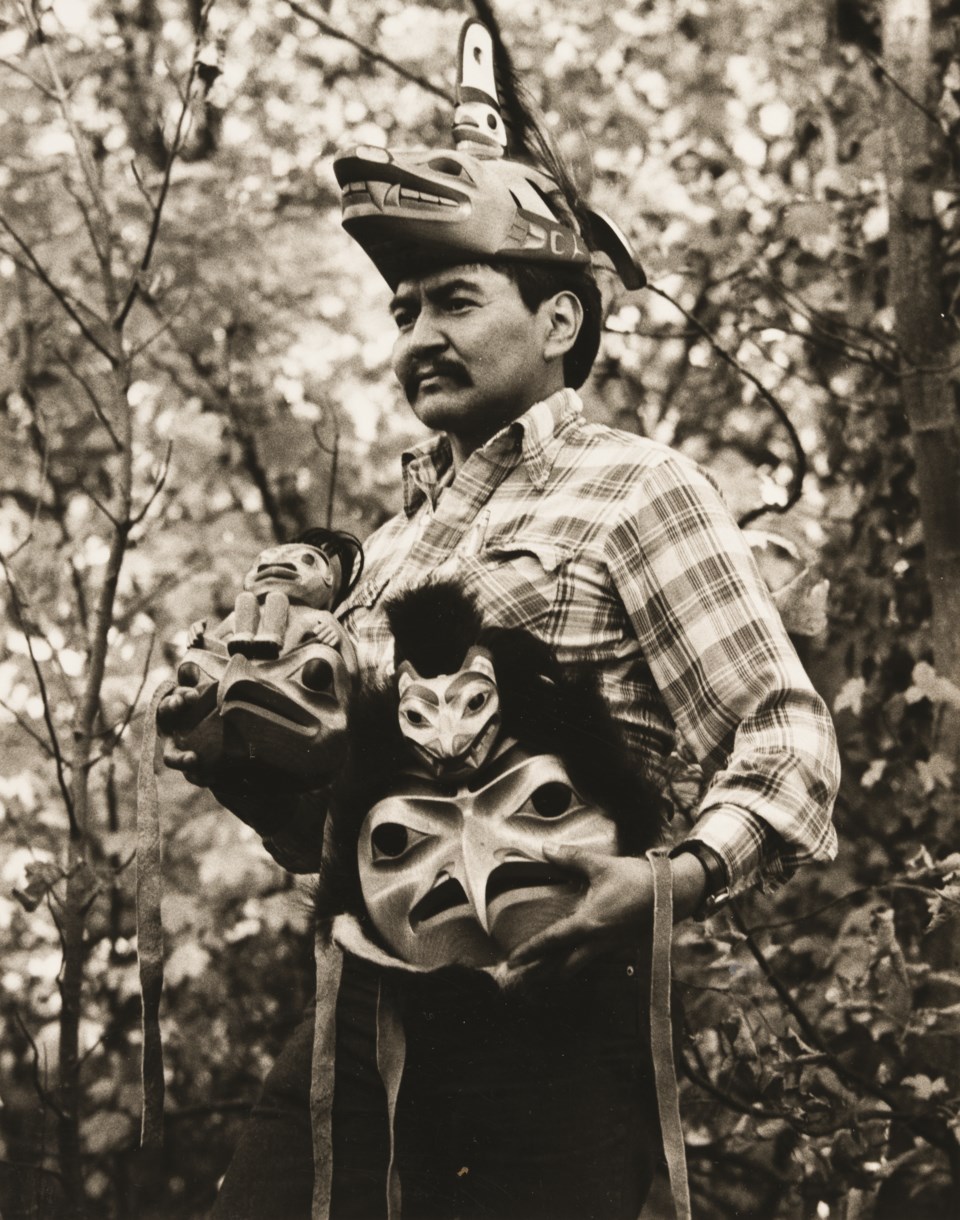The Audain Art Museum’s newest exhibition showcasing the work of renowned B.C. carver , has, practically speaking, been in the works for more than three years. But for chief curator and museum director , the seeds for this latest exhibit were first planted 35 years ago.
Then an assistant curator for an exhibition of North American Indigenous art in Toronto, it was the first curatorial gig of Collins’ nascent career, and also where he met Dempsey, even buying one of his prints for “half of all the money” he had at the time. The two have stayed in touch ever since.
“I’ve known Dempsey since 1986, so you could say we’ve been working on this show for a while,” he says. “It’s an honour to be able to work with an artist of this quality, who cares so much about his work, but also cares about representing Tahltan and Tlingit artistic traditions in a present context, while pushing forward to the future.”
The first-ever career retrospective of Bob’s work, features work spanning from the 1970s to the present. While Bob, 74, is known primarily for his highly-stylized masks and totem poles that draw on his Tahltan and Tlingit ancestry, the show demonstrates the breadth and ambition of his prolific output, featuring a selection of panels, wall sculptures, prints, traditional regalia, and jewelry alongside his inventive masks.
Living up to the exhibit’s name, wolves are featured prominently. Hailing from the wolf clan on his mother’s side, “the wolf is important in terms of how he’s rendered,” Collins explains. “He’s always baring teeth. His ears are always back. And he’s got what I refer to as that sleepy eye,” one of Bob’s trademarks.
As Bob’s career progressed, he moved away from more traditional depictions, while still maintaining their cultural essence. Where his early-career masks were functional and maintained a realistic shape, his later output played with form and angles, lending the masks a playful, almost surrealistic quality.
“He’s building these composite masks that are increasingly complex, even Baroque-like,” Collins says.
Bob continued on this path through what he calls his “wall sculptures,” dynamic, mounted, three-dimensional scenes usually depicting animals, often stacked on top of each other or intertwined together.
“For the last, I would say, 20 years, he’s created what I refer to as these little vignettes, almost like a little story in and of itself,” Collins says. “He’s creating these little mini-narratives.”
Along with his decorative work, Bob is no stranger to creating more utilitarian pieces, such as ceremonial bowls and spoons, vestments he designed and had made by his sister, Linda, and even a stunning glass coffee table propped up by a bronze frog.
“This show oscillates between purely display works, ceremonial works, and utilitarian works,” Collins notes.
A co-production with the in Kleinburg, Ont., the exhibit features work borrowed from some of Canada’s foremost public museums, as well as private collectors. Acquiring the exhibit’s nearly 100 works required some serious investigative work on the part of Collins and co-curator Sarah Milroy, from the McMichael.
“It’s a question of knowing what pieces you want and how to track them down. The private ones are a little trickier. It’s a lot of phone calls,” says Collins, who adds that one of Bob’s masterpieces, a mask called The Smart One that Collins has been hunting for years, was acquired just days before the show opened.
Running April 2 to Aug. 14, the ambitious exhibit not only marks the culmination of Bob’s decades-spanning career, but a coming-of-age for the Audain.
“This museum is very young by museum standards, so after six years, the fact we have relationships with the National Gallery, the Montreal Museum of Fine Arts, the Museum of Anthropology, the McMichael, it speaks to the fact that we’ve arrived,” Collins says. “In a larger context, this show also marks our arrival because we’re producing it on our own.”
The exhibit also comes with a deep personal meaning for Bob himself. At a small art opening in Vancouver last weekend that Collins attended, Bob got emotional talking about his retrospective at the Audain.
“It was a very touching moment, because he said it was about his teachers, those people that taught him, those people that supported him, those people that told him all these stories that are embedded in his work,” Collins says. “For him, it’s a recognition of those people because he was chosen by his elders, his family to commit to have these stories communicated. Now he knows that.”
The Audain is also hosting its annual fundraiser, , on April 23 at the Fairmont Chateau Whistler. For more information, visit .

